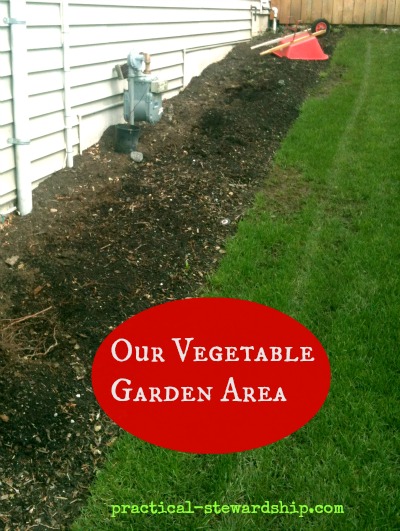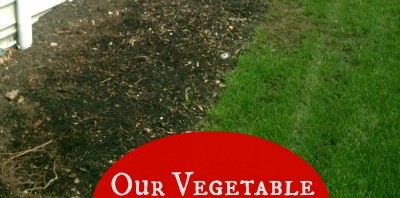It’s DIY Time again, where I post something you can do yourself rather than buy, which is a money saver, and can be VERY REWARDING. Some of these posts are crafts, sewing projects, re-purposed ideas, homemade cleaners, homemade health aids, tutorials, and the like.
 Recently we were introduced to a gardening concept that we found really compelling. It’s called wood chip gardening, and it is the subject of the movie Back to Eden…as well as much controversy.
Recently we were introduced to a gardening concept that we found really compelling. It’s called wood chip gardening, and it is the subject of the movie Back to Eden…as well as much controversy.
If you’d like to watch the movie, go here!
First, we recommend the movie…almost in its entirety. It’s available for free online at the Back to Eden film site, too. So don’t take our word for it; watch the movie or spend some time on the site.
Basically the idea is to introduce ground cover for the conditioning of the soil and for optimizing growing conditions. The proponent of the method in the film is named Paul Gautschi, and he suggests that the tilling of soil is a concept that was introduced after sin entered the world. It’s something that fallen man does as he works the earth; it’s something that best happens when done naturally…and that means without man’s help. Barren earth does not produce, yet that’s what many of our agricultural fields look like today. But when left alone, soil gathers and produces both nutrients and lush plant life…generally speaking.
It makes sense. Take where I live in the Pacific Northwest, for instance. Nobody cultivates the forest floor, but it’s abundant with life…and healthy soil. It’s not dependent on us to cultivate it and introduce synthetic fertilizers. More often our efforts only bring long-term problems, though masked by immediate results.
So how can we best simulate what seems to happen so successfully in nature? Enter the wood chips. Gautschi lives in Sequim, Washington in the rain shadow of the Olympic mountains. Though it’s on the Olympic Penninsula, an hour away from rain forest, Sequim gets between 15-20 inches of rain annually (that’s not a staggering amount of rain). And Gautschi doesn’t water his garden. But you wouldn’t know it by looking at it.
When left on the surface, the wood chips help to retain water, prevent weed seeds from germinating, and slowly introduce organic matter into the soil, improving it over a course of years. When folks make the mistake of tilling the wood chips into the soil, the process of breaking down the wood chips saps the essential nitrogen from the soil, depriving the hungry plant life of the important nutrient. This also makes sense, because on a forest floor, rotting wood, needles and dead foliage decay from the top down, and fungi and worms and other critters work their magic beneath the surface.
Like everything else, this gardening model comes with mixed reviews. Some people insist that it can’t work, but others have had tremendous success in all sorts of different climates the world over.
As for the Sarrs, we are interested in introducing wood chips to both our vegetable garden as well as our flower beds and plant gardens for a few reasons:
- We never fertilize anyway (less on principle and more because we’re lazy), so this has to be an improvement.
- It is almost guaranteed to reduce our water consumption.
- The weeding is always easier when there’s a layer between the soil and the surface, whether bark, chips or gravel. So weed control and aesthetics will be a plus.
- If we do a bit of legwork, we can probably get all the wood chips we could use for free.
Now, I’ve left a number of questions unanswered that the film and the website address, like the matters of what sort of wood chips are best, when to actually water, how to plant, where to get wood chips, and more. So check it out if you’re interested in learning more.
What about you? Have you ever tried wood chip gardening? Do you think it makes sense or does it sound plain silly?

I watched the video a few years ago and was Very interested. Last year I started a 14×32 plot with newspaper, leaves and compost and it did good. It is on its second year and I covered it all with just woodchips. I can’t wait to plant in it as it has become my fruit plot and there will be an orchard next to it soon. I started a new 30×50 vegetable BTE plot this year and covered it with newspaper, hay, leaves and then woodchips. So I think it’s a great process. I add compost to it like Paul said because initially the woodchips require nitrogen to start breaking down but he said after that it balances out. I think I will continually add compost and chicken/rabbit manure though anyways.
Hi Adam. We LOVE the wood chips and are starting our 3rd season using them. They’ve helped us reduce weeds by 99%. I hardly have to weed. And we didn’t need to water until August, saving GALLONS of water!! We need to get some more wood chips. I hope you enjoy gardening with them! Thanks for sharing!!
I watched he video a few years ago and was dry o trestles. Last year I started a 14×32 plot with newspaper, leaves and compost and it did good. It is on its second year and I covered it all with just woodchips. I can’t wait to plant in it as it has become my fruit plot and here will be an orchard next to it soon. I started a new 30×50 vegetable BTE plot this year and covered it with newspaper, hay, leaves and then woodchips. So I think it’s a great process. I add compost to it like Paul said because initially the woodchips require nitrogen to start breaking down but he said after that it balances out.
Have fun planting your garden! Your soil looks great! Thanks for sharing this on The HomeAcre Hop! Hope to see you tomorrow night at: http://www.theselfsufficienthomeacre.com/2013/03/the-homeacre-hop-11.html
We really enjoyed this film and have watched it twice. Excellent concept and one we are hoping to implement in our garden over time. We made many trips last year to the free green waste site in our county.
Hi Jenny, We are going to be implementing these concepts, too. Thanks for visiting!
I LOVE back to Eden! Watched it a Year ago and have since started a large sustainable garden using wood chips. We use them everywhere in the yard but I especially love wood chips in the front yard companion garden. It is true what the DVD teaches about weed ease and compost benefits. Wood chips however pull nitrogen from the soil in order to decompose so its important to feed your chips/garden. I use chicken, rabbit, and worn, tea and compost.
Hi Steffanie, Thanks so much for sharing. I will have to look more into the nitrogen. Thanks for visiting!
We have always mulched different flower/vegetable beds with whatever we could find for free or was inexpensive. I believe mulching is beneficial and have seen our soil being built up through the years from trench composting and mulching. Thanks for sharing the info…I will keep it in mind for sure!
Hi Nancy, Thanks you for sharing and visiting!
We have been doing this for 2 years in our vegetable garden. The worms love it and it makes walking in the garden, even right after it rains, very doable. We have clay soil, so going in there to pick vegetables after a rain , would have almost required someone tying a rope to you and pulling you out , before we had the wood chip mulch.
Hi Rebecca! Thanks so much for sharing. It is encouraging to hear success stories!
I actually just watched this movie over the weekend. I thought it was fascinating, but skeptical of it working. I do believe the wood chips will reduce water use. We only have the space now to garden in raised beds, but have earmarked the idea for future consideration.
Our friend has done this with his parents flowers for 10 years and just started applying it to his vegetable garden last year. He even got to go to the actual farm since he lives in Washington! He’s seen it work. We will see too, now!